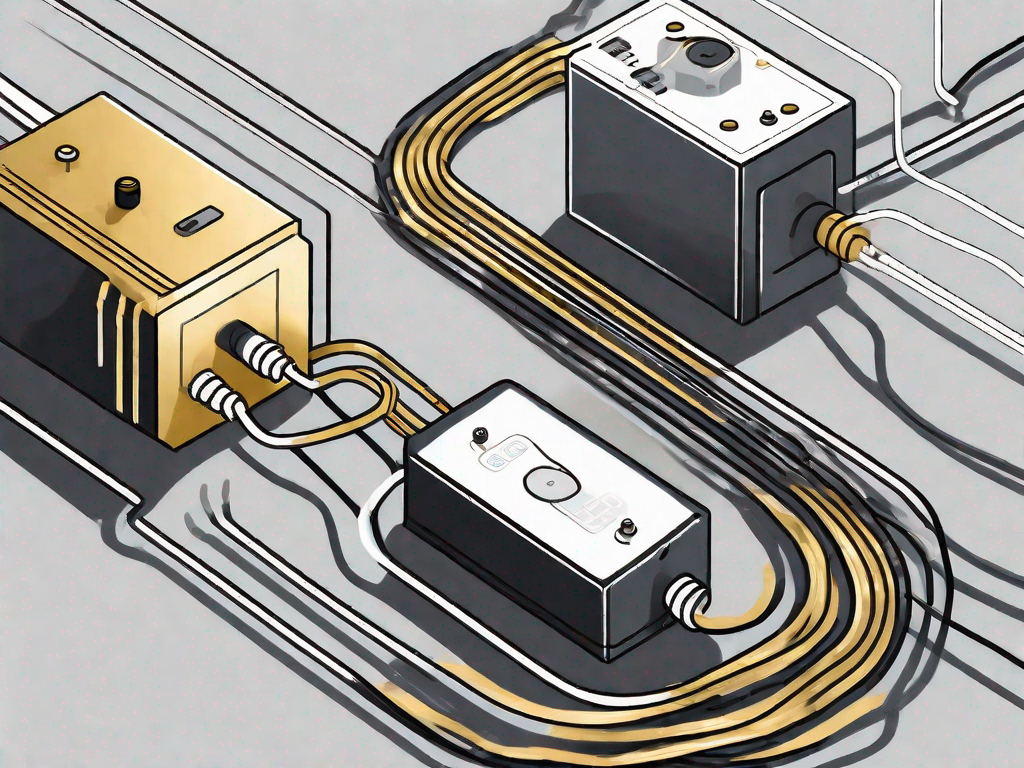
Software requirements for EST4 system management
In the ever-evolving world of technology, efficient system management is crucial for businesses to stay ahead. EST4 system management software has emerged as a powerful tool for organizations to streamline their operations and enhance productivity. However, understanding the software requirements for EST4 is essential for successful implementation and optimal performance. This article will delve into the intricacies of EST4 system management and its software requirements, offering valuable insights into the key features, hardware compatibility, operating system specifications, memory and storage requirements, network and security needs, as well as the impact of software requirements on system efficiency. Additionally, we will explore future trends in EST4 system management software, providing a glimpse into predicted developments and the importance of preparing for future software requirements.
Understanding EST4 System Management
EST4 system management software plays a pivotal role in overseeing and controlling various aspects of an organization’s operations. From monitoring and managing devices to facilitating seamless communication between departments, EST4 serves as the backbone of efficient system management. By automating processes and centralizing operations, EST4 empowers businesses to optimize their resources and improve overall productivity.
The Role of EST4 in System Management
EST4 acts as a centralized management platform, enabling administrators to monitor and control multiple devices and subsystems from a single interface. This intuitive interface allows seamless integration and access to diverse functionalities, such as fire detection systems, access control, video surveillance, and intrusion detection. By providing a unified view of these subsystems, EST4 simplifies system management and enhances operational efficiency.
With EST4, organizations can effectively monitor their fire detection systems. The software provides real-time updates on the status of fire alarms, allowing administrators to promptly respond to any potential threats. Additionally, EST4 offers event logging capabilities, which enable the tracking and analysis of fire incidents, ensuring that appropriate measures are taken to prevent future occurrences.
In terms of access control, EST4 offers robust features that allow organizations to manage and monitor access to their premises. Administrators can set up customized access rules, granting or revoking permissions as needed. The software also provides real-time notifications when unauthorized access attempts are detected, ensuring the security of the organization’s assets and personnel.
Video surveillance is another critical aspect of system management that EST4 excels in. The software seamlessly integrates with CCTV cameras, enabling administrators to monitor live feeds and review recorded footage. With EST4, organizations can enhance their security measures by effectively monitoring their premises and identifying any suspicious activities.
Furthermore, EST4’s integration with intrusion detection systems provides organizations with comprehensive security coverage. The software enables administrators to receive real-time alerts in the event of unauthorized access attempts or breaches. By promptly responding to these alerts, organizations can mitigate potential risks and safeguard their assets.
Key Features of EST4 System Management
EST4 system management software boasts a wide array of features that cater to the diverse needs of modern organizations. These features include real-time monitoring, event logging, customized reporting, remote access, and seamless integration with other enterprise systems. By harnessing the power of these features, businesses can optimize their processes, make data-driven decisions, and ensure a safe and secure environment for their employees and assets.
Real-time monitoring is a crucial feature of EST4 that allows organizations to stay informed about the status of their systems. Administrators can view real-time data and receive instant notifications regarding any anomalies or issues. This proactive approach enables organizations to address problems promptly, minimizing downtime and maximizing operational efficiency.
Event logging is another valuable feature offered by EST4. The software records and stores all system events, providing a comprehensive audit trail. Administrators can review these logs to analyze system performance, identify patterns, and make informed decisions to optimize their operations.
Customized reporting is an essential tool for organizations to gain insights into their system management processes. EST4 allows administrators to generate customized reports based on specific parameters and requirements. These reports provide valuable data and analytics, enabling organizations to identify areas for improvement and make data-driven decisions.
Remote access is a convenience feature offered by EST4, allowing administrators to access and manage the system from anywhere at any time. This feature is particularly beneficial for organizations with multiple locations or remote teams. Administrators can remotely monitor and control devices, ensuring seamless system management regardless of geographical constraints.
Seamless integration with other enterprise systems is a key strength of EST4. The software can integrate with various systems, such as building management systems, human resources management systems, and asset management systems. This integration enables organizations to streamline their operations, eliminate data silos, and achieve a holistic view of their overall business processes.
In conclusion, EST4 system management software provides organizations with a powerful and comprehensive solution for overseeing and controlling various aspects of their operations. With its centralized management platform, wide array of features, and seamless integration capabilities, EST4 empowers businesses to optimize their resources, enhance operational efficiency, and ensure a safe and secure environment for their employees and assets.
Essential Software Requirements for EST4
For seamless integration and optimal performance, it is crucial to ensure that the system meets the necessary software requirements for EST4 implementation. The software requirements go beyond just the compatibility of hardware and operating systems. Let’s explore some additional factors to consider.
Hardware Compatibility for EST4 Software
The first step in implementing EST4 system management software is to ensure hardware compatibility. This involves assessing the compatibility of the existing devices and subsystems with the software. Compatibility is critical to avoid any potential conflicts or performance issues that may arise due to incompatible hardware configurations. Prioritizing hardware compatibility eliminates the risk of system failure and ensures a smooth implementation process.
When evaluating hardware compatibility, it is important to consider factors such as processor speed, memory capacity, and storage requirements. The EST4 software may have specific hardware requirements to ensure optimal performance. For example, it may require a minimum of 8GB RAM and a quad-core processor to handle the system management tasks efficiently.
Furthermore, it is essential to assess the compatibility of peripherals and external devices that may be connected to the system. This includes devices such as printers, scanners, and external storage devices. Ensuring compatibility with these devices is crucial for smooth data transfer and seamless integration with the EST4 software.
Operating System Specifications for EST4
EST4 system management software is designed to run on specific operating systems. It is essential to carefully review the software’s operating system requirements to ensure compatibility. This includes checking the supported versions, recommended configurations, and any additional dependencies that may be necessary. Adhering to the specified operating system specifications guarantees stability and functionality throughout the system management process.
When considering the operating system specifications, it is important to take into account factors such as the version of the operating system and any service packs or updates required. Some software may only be compatible with specific versions of the operating system, and failure to meet these requirements can result in compatibility issues and limited functionality.
In addition to the operating system version, it is also important to consider the architecture of the operating system. The EST4 software may have specific requirements for 32-bit or 64-bit operating systems. It is crucial to ensure that the system meets the specified architecture to avoid any compatibility issues.
Moreover, it is worth noting that the EST4 software may have dependencies on other software components, such as database management systems or runtime environments. It is important to identify and install these dependencies to ensure the smooth operation of the EST4 software.
By carefully considering the hardware compatibility and operating system specifications, you can ensure a successful implementation of the EST4 system management software. Meeting these software requirements not only guarantees optimal performance but also minimizes the risk of compatibility issues and system failures.
Detailed Analysis of EST4 Software Requirements
Once the hardware and operating system requirements are met, it is crucial to analyze the specific software requirements for EST4 implementation. This includes an in-depth examination of memory and storage requirements, as well as network and security needs.
When it comes to memory and storage requirements, there are several factors that need to be taken into consideration. The size of the organization plays a significant role in determining the amount of memory and storage needed. A larger organization with more devices and subsystems being managed will naturally require more memory and storage capacity. Additionally, the volume of data being processed also influences the memory and storage requirements. Organizations dealing with a high volume of data will need to allocate more resources to ensure smooth operations and prevent performance degradation.
It is essential to carefully assess these requirements and allocate resources accordingly to maintain system efficiency. Inadequate memory allocation can lead to slow performance and system crashes, while insufficient storage capacity can result in data loss and limited functionality. Therefore, thorough analysis and planning are crucial to ensure that the EST4 system management software has the necessary memory and storage resources to meet the organization’s needs.
Network and security requirements are equally important considerations for EST4 implementation. EST4 relies heavily on network connectivity to facilitate communication between devices and subsystems. Therefore, having a robust network infrastructure is essential for seamless data transmission and real-time monitoring. Organizations must ensure that their network infrastructure can handle the increased traffic and bandwidth demands that come with implementing EST4.
Implementing proper security measures is also crucial to protect sensitive data and maintain system integrity. Organizations must have robust firewalls in place to prevent unauthorized access to the EST4 system. Encryption protocols should be implemented to secure data during transmission, ensuring that it cannot be intercepted or tampered with. User access controls are also vital to restrict access to the EST4 system to authorized personnel only, minimizing the risk of data breaches and unauthorized system modifications.
Understanding and fulfilling these network and security requirements is paramount for successful EST4 system management implementation. Failure to meet these requirements can result in network vulnerabilities, data breaches, and compromised system performance. Therefore, organizations must invest time and resources in analyzing and addressing these requirements to ensure the smooth and secure operation of the EST4 software.
The Impact of Software Requirements on EST4 Performance
Software requirements have a significant influence on the overall performance of EST4 system management. By understanding this impact, organizations can better allocate resources and optimize their systems to achieve maximum efficiency.
When it comes to the performance of the EST4 system management software, the influence of software requirements cannot be underestimated. These requirements directly affect the speed, stability, and reliability of the software, making them a critical factor in determining how well the system operates.
Meeting the specified software requirements is essential for organizations to ensure that the EST4 software operates at its peak performance. By complying with these requirements, organizations minimize the risk of system slowdowns or crashes, which can have a detrimental impact on productivity and efficiency.
Moreover, compliance with software requirements enables organizations to fully utilize the functionality of the EST4 system management software. This means that by meeting these requirements, organizations can maximize efficiency and productivity in their system management processes. They can take advantage of all the features and capabilities that the software offers, allowing them to streamline their operations and achieve better results.
How Software Requirements Influence System Efficiency
The influence of software requirements on system efficiency is multifaceted. When organizations meet the specified requirements, they ensure that the software operates smoothly and efficiently. This, in turn, leads to improved system performance and overall efficiency.
By having the right software requirements in place, organizations can optimize their systems to achieve maximum efficiency. For example, if the software requires a certain amount of memory or processing power, organizations can allocate the necessary resources to meet these requirements. This ensures that the system has the capacity it needs to perform at its best.
Furthermore, software requirements also play a role in system stability. By meeting these requirements, organizations minimize the risk of system crashes or errors that can disrupt operations and cause delays. This leads to increased reliability and uptime, allowing organizations to carry out their system management tasks without interruptions.
Balancing Software Requirements and System Performance
While fulfilling software requirements is crucial, it is equally important to strike a balance between software needs and system performance. Organizations must carefully evaluate their requirements, considering the cost-benefit analysis of additional resources or upgrades.
Managing software requirements while optimizing system performance is a delicate task that requires regular monitoring and proactive decision-making. Organizations need to stay updated on the latest software requirements and assess whether their current systems meet those requirements. If not, they may need to invest in additional resources or upgrades to ensure that their systems can perform at their best.
At the same time, organizations must also consider the impact of meeting software requirements on their overall budget and resources. They need to weigh the benefits of meeting these requirements against the costs involved. This involves considering factors such as the potential improvements in system performance, productivity gains, and the long-term impact on the organization’s operations.
In conclusion, software requirements have a significant impact on the performance of the EST4 system management software. By meeting these requirements, organizations can optimize their systems for maximum efficiency and productivity. However, striking a balance between software needs and system performance is crucial to ensure long-term success. Regular monitoring and proactive decision-making are essential to manage software requirements effectively and maintain optimal system performance.
Future Trends in EST4 System Management Software
The world of system management software is constantly evolving, and EST4 is no exception. Keeping up with the latest trends and innovations is vital for organizations to remain competitive and future-proof their operations.
As technology continues to advance at a rapid pace, the future of EST4 system management software holds exciting possibilities. Experts predict that future versions of EST4 will focus on enhanced analytics, artificial intelligence, and machine learning capabilities. These developments will empower organizations to make data-driven decisions, automate routine tasks, and proactively identify and mitigate potential risks.
Imagine a future where EST4 software can analyze vast amounts of data in real-time, providing valuable insights and actionable recommendations to system administrators. With advanced analytics capabilities, organizations can gain a deeper understanding of their system’s performance, identify bottlenecks, and optimize resource allocation. This level of intelligence will revolutionize system management, allowing organizations to operate more efficiently and effectively.
Artificial intelligence and machine learning will also play a significant role in the future of EST4 software. These technologies will enable the software to learn from past system behaviors and predict future issues or anomalies. By leveraging AI and machine learning algorithms, EST4 can proactively detect and address potential problems before they impact system performance. This proactive approach will minimize downtime, improve system reliability, and ultimately enhance the overall user experience.
To prepare for the future requirements of EST4 software, organizations must adopt a proactive approach. It starts with regularly updating their hardware and operating systems to ensure compatibility and optimize performance. Staying informed about software updates and advancements is also crucial, as new features and functionalities may require specific hardware or software configurations.
Investing in training programs for employees is another essential step in preparing for future EST4 software requirements. By equipping employees with the necessary skills and knowledge, organizations can ensure a smooth transition to new technologies and maximize the benefits of EST4 system management software.
In conclusion, understanding the software requirements for EST4 system management is a critical step towards achieving efficient and effective system management. By familiarizing themselves with the key features, hardware compatibility, operating system specifications, memory and storage requirements, network and security needs, and the impact of software requirements on system performance, organizations can optimize their operations and unlock the full potential of EST4.
However, it doesn’t stop there. Organizations must also stay attuned to future trends and developments in EST4 software. The ever-evolving world of system management software demands continuous adaptation and innovation. By embracing new requirements and technologies, organizations can stay competitive and ensure long-term success in an increasingly digital landscape.


